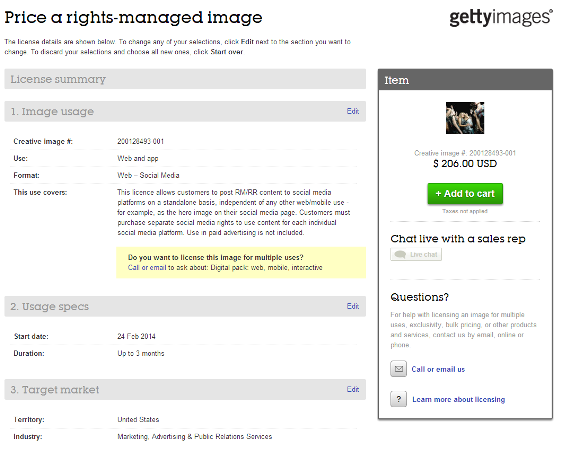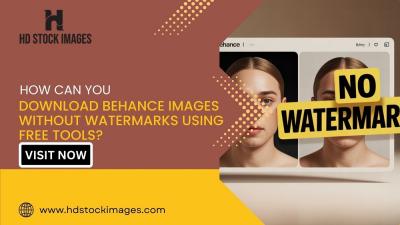Using visuals can elevate your projects, and Getty Images offers a treasure trove of stunning imagery. But before you dive in, it’s crucial to understand how to navigate their licensing options. Getting the rights to use Getty Images can be straightforward, but it’s essential to know what you’re getting into. Let’s demystify the process so you can confidently incorporate beautiful images into your work!
Understanding Getty Images Licensing Options

When it comes to using Getty Images, understanding the different licensing options is key to making sure you’re compliant and protected. Getty offers various licenses, each tailored to fit different needs and uses. Let’s break these down.
1. Royalty-Free (RF) Licenses:
Royalty-free means you pay a one-time fee to use an image without having to pay royalties for each use. It’s a flexible option, perfect for projects where you may need to use the same image multiple times across various media. However, it doesn’t mean the image is free; you still need to purchase it. Here are some important points about RF licenses:
- Typically covers a wide range of uses, including print, web, and social media.
- Can be used in multiple projects without additional fees.
- Some restrictions may apply, such as not using the images in merchandise or for resale.
2. Rights Managed (RM) Licenses:
Rights Managed licenses are more restrictive but can be beneficial for specific projects. Prices vary based on factors like usage duration, geographic region, and audience size. When you purchase an RM license, you’re essentially securing exclusive rights for your intended purpose.
- Ideal for high-profile projects where exclusivity is crucial.
- Pricing can be complex; always clarify the terms before purchasing.
- Usage rights are limited to the terms outlined in your agreement.
3. Editorial Licenses:
For news-related or editorial content, Getty offers Editorial licenses. These images can’t be used for commercial purposes but are great for blogs, articles, or educational material. Here’s what to keep in mind:
- Images are typically used in contexts that inform or report.
- Cannot be modified extensively, as they must retain their original context.
- Pricing is usually lower than commercial licenses, making them accessible for many projects.
When deciding which license to go for, always consider your project’s needs. Are you creating a blog post, a marketing campaign, or perhaps a presentation? Understanding these nuances will help you make informed decisions, ensuring you get the right images while respecting copyright laws.
In summary, navigating Getty Images’ licensing can seem daunting, but breaking it down into categories makes it manageable. Whether you opt for Royalty-Free, Rights Managed, or Editorial licenses, always read the fine print. This way, you can avoid pitfalls and ensure your projects shine with the right visuals!
Also Read This: How Big Getty Images Is and What That Means for You
3. Steps to Request Rights for Getty Images
So, you’ve decided to use a stunning Getty Image for your project. Awesome choice! Now, let’s walk through the steps to request the rights you need. It’s simpler than you might think!
- Identify Your Image: Start by browsing Getty Images and selecting the image you want to use. Take note of its ID number; you’ll need this for your request. Remember, choosing the right image is crucial, so make sure it fits your project’s theme!
- Visit the Licensing Page: Once you’ve chosen your image, head over to the Getty Images licensing page. You can usually find a button that says “Licensing Options” or something similar right next to the image. Click on it!
- Choose Your License Type: Getty Images offers various licensing options, including royalty-free and rights-managed licenses. Think about how you’ll use the image. For example, if it’s for a one-time use in a blog post, a royalty-free license might be the way to go. If you plan on using it in a more extensive campaign, a rights-managed license could be better.
- Fill Out the Request Form: After selecting your license type, you’ll be prompted to fill out a request form. This form typically asks for details like:
- Your name and contact information
- The intended use of the image
- The duration of the use
- Any specific dimensions or formats needed
Be as detailed as possible. The more information you provide, the easier it is for Getty to process your request quickly!
And voilà! You’re well on your way to using that beautiful Getty Image in your project. It’s that easy!
Also Read This: How to Buy Getty Images Cheap Tips and Tricks for Finding Affordable Getty Stock Photos
4. Pricing and Costs for Using Getty Images
Now that you know how to request rights for Getty Images, let’s talk about the pricing. Understanding the costs involved can help you budget effectively and avoid any surprises down the line.
Getty Images offers different pricing structures based on the type of license you choose. Here’s a brief breakdown:
| License Type | Usage | Price Range |
|---|---|---|
| Royalty-Free | One-time use, multiple formats | $50 - $300 |
| Rights-Managed | Specific use, duration, and exclusivity | $100 - $1,500+ |
Keep in mind that these prices can vary based on factors like:
- The image's popularity
- The intended geographical distribution
- Whether you need exclusive rights
For instance, if you’re using an image in a national advertising campaign, expect to pay more than if you’re just using it on your personal blog. Always consider your project’s budget when planning to use Getty Images!
Lastly, it’s wise to keep an eye out for any sales or discounts Getty might offer from time to time. Signing up for their newsletter can keep you in the loop about any exciting deals!
Also Read This: Understanding iStock Images A Beginner’s Guide to Their Collections
5. Alternatives to Getty Images for Stock Photos
If you’re looking for stock images but want to explore options beyond Getty Images, you’re in luck! There are several platforms that provide stunning visuals, often at a fraction of the cost or even for free. Here are some great alternatives:
- Shutterstock: Known for its vast library, Shutterstock offers a wide range of images, videos, and music tracks. They have flexible pricing plans and a subscription model that can save you money if you need multiple images.
- Adobe Stock: Perfect for those who are already in the Adobe ecosystem, Adobe Stock integrates seamlessly with tools like Photoshop and Illustrator. Their collection includes high-quality images and vectors.
- Unsplash: If you’re working on a tight budget, Unsplash provides high-resolution images free of charge. The quality is exceptional, and the community of photographers contributes regularly.
- Pexels: Similar to Unsplash, Pexels offers free stock photos and videos. Their curated collections make it easy to find the right image for your project quickly.
- iStock: A subsidiary of Getty Images, iStock offers a vast library with flexible pricing options. It’s a great choice for those looking for quality images without the higher price tag of Getty.
Exploring these alternatives can help you find the perfect visuals while staying within your budget. Always check the licensing agreements to ensure your chosen images meet your project’s needs!
6. Best Practices for Using Licensed Images
Using licensed images correctly is crucial to avoid legal issues and ensure respect for the artists’ work. Here are some best practices to follow:
- Read the License: Always read the licensing agreement of the image you plan to use. Different licenses grant various rights, and understanding what you can and cannot do is essential.
- Attribute Properly: If the license requires attribution, make sure to credit the photographer or creator correctly. This could be a simple line in your project, such as “Photo by [Photographer’s Name] on [Platform].”
- Avoid Modifications: Some licenses do not allow modifications of the image. If you need to alter an image, ensure that the license permits it or choose a different image that allows for such changes.
- Keep Documentation: Save all documentation related to the licenses of images you use. This may be necessary if any questions arise about usage rights in the future.
- Use Images Responsibly: Be mindful of how and where you use licensed images. Avoid using them in a way that could mislead or misrepresent the creator’s intent.
By following these best practices, you can use licensed images confidently and ethically, ensuring that your projects shine while respecting the rights of creators. Happy designing!
 admin
admin








